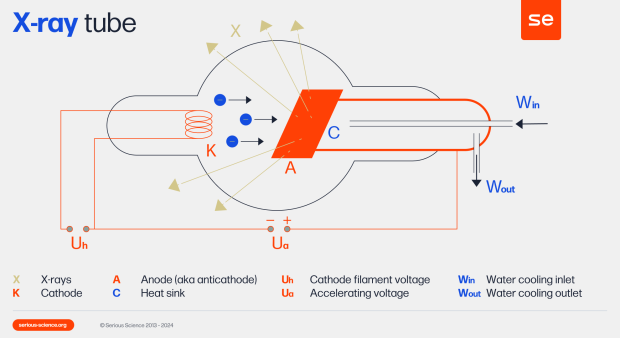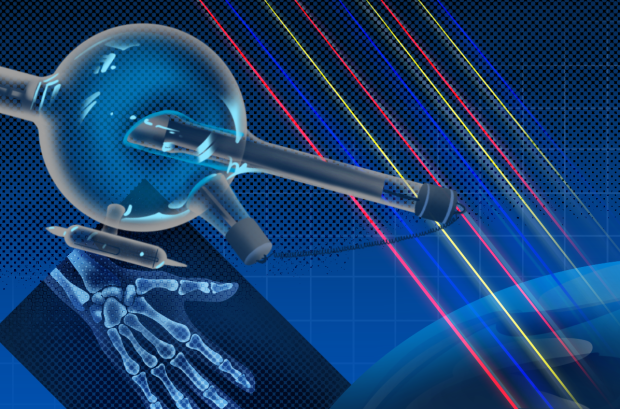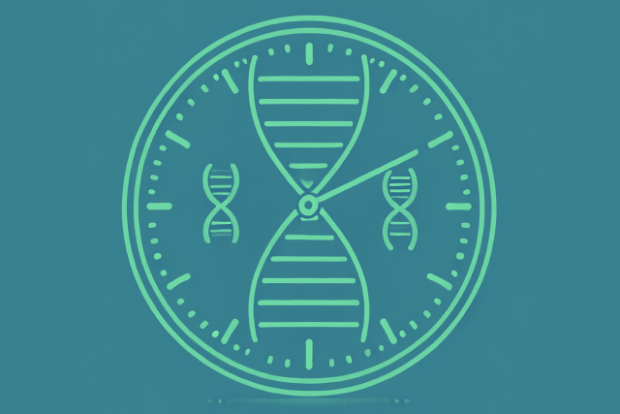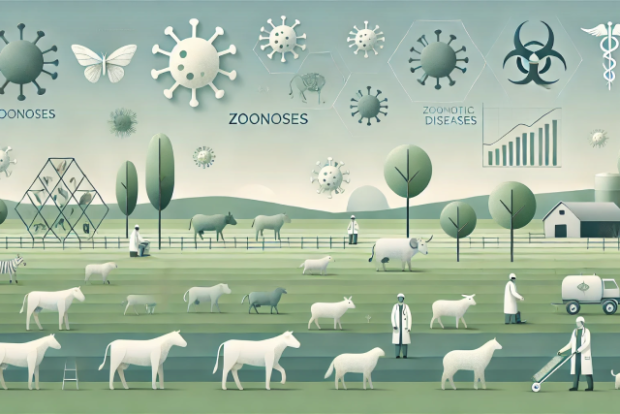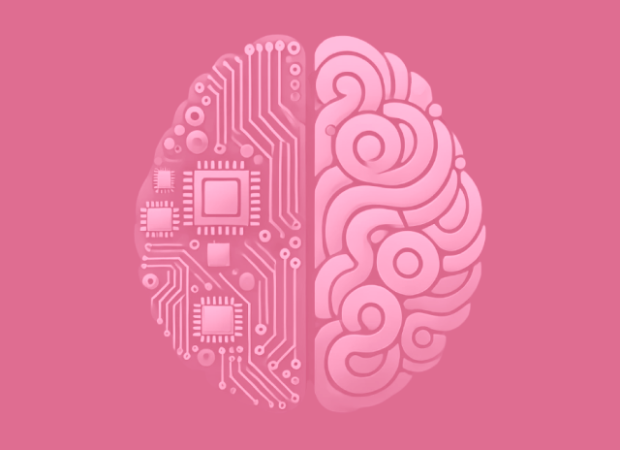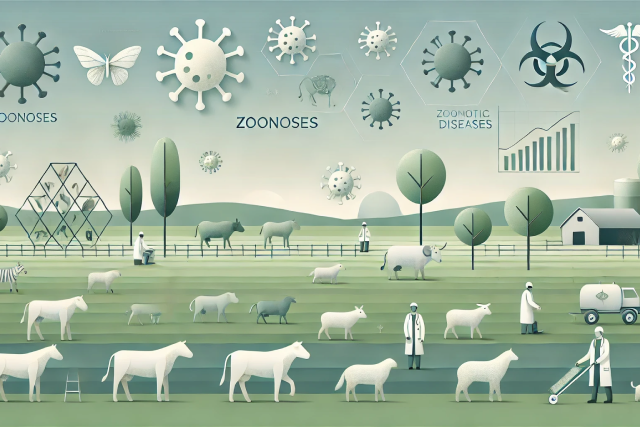Types of Immunodeficiencies and Their Treatments
An overview from birth to an old age
Polina Deletich - videos | July 3, 2024

The immune system is a complex network involving interactions between cells, tissues, organs, and various substances they produce. White blood cells, lymph nodes, and other lymphoid structures and organs, including the spleen, bone marrow, and even tonsils, form a powerful team capable of protecting a person from many threats. In some situations, the coordinated work of the immune system’s components is disrupted, making the body much less protected against diseases. These disruptions can be related to genetic factors present in the body from birth or acquired during a person’s lifetime.
Polina Deletich, an immunologist and research associate at University College London, discusses the types of immunodeficiencies and how modern medicine combats them.
Reduced Immune Status
Immunodeficiency is a condition in which the body cannot resist infectious, oncological, parasitic, and other diseases. Patients with immunodeficiency of any nature experience infections (otitis, pneumonia, meningitis, bronchitis, etc.) more frequently than healthy individuals, and the course of these diseases is usually longer and poorly responsive to conventional antibacterial treatments. This often necessitates the use of intravenous antibiotics, a more potent form of therapy, and in severe cases, hospitalization may be required.
Furthermore, the pathogens that exploit the weakened immune systems of immunodeficient individuals are typically harmless to those with a normally functioning immune system. These opportunistic infections include viruses like Epstein-Barr, bacteria like Staphylococcus aureus, parasites like Toxoplasma, and fungi like Candida. In addition to these infections, patients with immunodeficiencies are at a heightened risk of developing autoimmune and oncological diseases, further complicating their health.
Modern strategies for treating an ineffective immune system aim to eliminate infectious agents and maintain the immune system’s ability to combat pathogens. Contemporary researchers are developing drugs that modify T-cells so that they start working against specific agents. This principle is the basis of CAR-T cell therapy, which genetically modifies the body’s T-cells to attack specific tumour antigens. The process starts by extracting T-cells from the patient’s blood. A gene for a particular receptor called a chimeric antigen receptor (CAR) is then inserted into the T-cells in a laboratory setting. These modified T-cells, now capable of targeting and destroying cancer cells, are infused back into the patient. This therapy has shown high effectiveness against certain types of cancer. For instance, in patients with acute lymphoblastic leukaemia who had not responded to other treatments, CAR-T cell therapy achieved complete remission in 9 out of 10 cases. Despite its success, CAR-T cell therapy can cause serious side effects, including severe inflammatory and allergic reactions, as well as neurological complications. Researchers are continually working to reduce these side effects.
One of the main challenges with CAR-T cell therapy is its high cost, which limits widespread use. The therapy is currently administered individually, and it is difficult to predict when it will become widely accessible. Scientists are focused on improving the safety profile of CAR-T cell therapy to minimize adverse effects, and there is also ongoing research to expand the use of CAR-T cell therapy to treat other types of cancer and potentially other diseases. While CAR-T cell therapy represents a significant advancement in immunotherapy, its high cost and potential side effects mean it is not yet a universally accessible treatment. However, with ongoing research and development, there is hope that these challenges will be addressed, making this powerful treatment option more widely available.
Characteristics of Primary Immunodeficiency States
Immunodeficiencies are typically classified into primary and secondary types. A less classical approach includes physiological immunodeficiencies, which refer to the reduced effectiveness of the immune system in pregnant women, newborns, and individuals in deep old age.
Over 400 described types of primary immunodeficiencies vary in severity, progression, and the affected component of the immune system. Genetic factors predominantly determine primary immunodeficiencies: they are inherited from parents or associated with specific point mutations in DNA. Severe primary immunodeficiencies manifest immediately after birth, whereas milder conditions may not manifest during a person’s lifetime. Since timely medical intervention can be crucial for patients with congenital immunodeficiencies, the diagnosis of some of the most severe types of immunodeficiencies is included in newborn screening in most U.S. states and other countries.
Primary immunodeficiencies are classified according to the components of the immune system whose functions are impaired. More than half of all primary immunodeficiencies are due to humoral immune deficiencies, where patients have a disrupted process of antibody formation. Less common are primary immunodeficiencies of the cellular response, complement protein deficiencies, and phagocyte deficiencies. Severe manifestations of immunodeficiencies are usually observed in combined immunodeficiencies, which comprise 15% of all primary immunodeficiencies. In these cases, both cellular and humoral components of the immune system are affected, significantly impairing the body’s ability to combat pathogens.
For individuals with severe combined immunodeficiency (SCID), even minimal infections can become fatal. With urgent treatment, the life expectancy of newborns with this condition is at most one year. To save a child with SCID, a bone marrow transplant is necessary within the first three months of life. It is important to note that gene therapy is actively developing today, allowing for the application of gene therapy methods to primary immunodeficiencies with known mutations. The principle of gene therapy involves delivering new genetic material to target cells. This approach holds promise for treating primary immunodeficiencies by correcting the underlying genetic defects, providing a long-term solution and significantly improving the quality of life for affected individuals.
Secondary Immunodeficiencies
Secondary immunodeficiencies are much more common. Infections, chronic diseases, immunosuppressive drugs, and nutrient deficiencies can trigger those conditions, but in some cases, they are the body’s natural state.
Possibly the most well-known type of secondary immunodeficiency is progressive HIV infection, which affects CD4 T-cells responsible for timely immune responses and the formation of immune memory. Without treatment, the number of these cells rapidly declines, potentially leading to acquired immunodeficiency syndrome (AIDS). The classic manifestation of AIDS is the development of opportunistic infections and certain types of cancers.
However, today, thanks to the development of medications, people diagnosed with HIV can live healthy lives with life expectancies comparable to those of healthy individuals. The main problem in treating such patients today lies in the complications associated with the toxicity of antiretroviral drugs (HIV medications). Modern researchers are focused on addressing this issue to improve the safety and efficacy of treatments.
Among other infectious diseases that suppress the immune system, cytomegalovirus infection, measles, and rubella are noteworthy. In healthy adults, cytomegalovirus infection usually remains asymptomatic. However, some studies suggest that this virus actively impacts the T-cell component, accelerating the aging of the immune system and reducing the body’s ability to form immune memory.
Another disease affecting immune memory is measles. The measles virus destroys the immune memory’s B-cell component, leading to “immune amnesia.” As a result, people who have had measles lose all accumulated immunity they had acquired either from previous illnesses or from vaccinations. The disruption of immune memory reduces the body’s ability to quickly develop anti-infection defences against pathogens it has previously encountered, inevitably leading to the recurrence of disease symptoms.
Conversely, Rubella is particularly difficult during the intrauterine period and for newborns. Intrauterine rubella can severely disrupt the development of a child’s immune system, often resulting in humoral immunity disorders in newborns. These disorders persist throughout life and usually necessitate ongoing replacement therapy.
It is important to note that infections and various medications can cause immunosuppression. Sometimes, taking such drugs may be necessary for a specific patient. For example, certain cytostatic drugs used in severe forms of psoriasis can provoke tumour processes. Additionally, immunosuppressive agents are taken by individuals who have undergone organ transplants.
Such therapy helps prevent the body from attacking the donor organ as foreign: the body’s immune response is reduced, facilitating the organ’s integration. While these medications are crucial for the success of organ transplants and managing certain chronic conditions, they compromise the immune system’s ability to combat infections and other diseases, requiring careful monitoring and management.
Nutritional deficiencies also contribute to reduced effectiveness of the body’s response to antigens. A significant percentage of secondary immunodeficiencies in developing countries is linked to malnutrition: it has been proven that the reduction in the quantity and quality of T-cells is proportional to the decrease in protein levels in the human body. However, factors such as smoking, poor air quality, or vitamin deficiencies have not been confirmed to impact the immune system directly. An exception can be made for vitamin D, a key player in the immune system, responsible for absorbing calcium and phosphorus and directly affecting various components of immunity.
While smoking or polluted air may not directly suppress the immune system, they cause constant respiratory tract irritation and background inflammation. This, in turn, lowers the immune system’s sensitivity threshold, significantly increasing the risk of developing chronic infectious and oncological diseases. Therefore, it is crucial to maintain good nutrition and address environmental factors, as these are essential for supporting immune health and preventing secondary immunodeficiencies.
Physiological immunodeficiencies
The first months of a newborn’s life and old age are periods characterized by physiological immunodeficiency. The suppression of the immune system immediately after transitioning from the sterile intrauterine environment to the non-sterile outside world allows the newborn to adapt to the vast diversity of external microorganisms without responding to massive inflammatory reactions.
During these early days of life, passive protection for the infant is provided by IgG immunoglobulins received from the mother through the placenta or breast milk. This maternal immunity helps the newborn navigate and survive the initial exposure to various pathogens while their immune system matures and begins to develop its responses.
The immune system’s efficiency naturally declines in elderly individuals due to aging, making them more susceptible to infections and diseases. Understanding these physiological changes is crucial for developing appropriate strategies to support immune function during these vulnerable life stages.
Premature infants, born before 37 weeks of gestation, spend less time in the womb and consequently receive fewer maternal antibodies through the placenta. Specialists often recommend giving these infants at least a few drops of breast milk. The antibodies in the mother’s milk provide passive immune protection and colonize the intestines, preventing conditions. One of them is necrotizing enterocolitis, a severe gastrointestinal disorder that affects the deep layers of the intestinal mucosa and is a serious complication during the neonatal period in premature infants.
Physiological immunodeficiencies in elderly individuals develop because the adaptive immune system, which forms memory upon encountering new antigens, loses its diversity. The production of new T-cells significantly decreases or even stops due to the so-called involution of the thymus. Additionally, comorbid conditions can contribute to the immunodeficiency of older adults.
As the immune system undergoes significant changes with age, the risk of developing autoimmune processes, cancer, and infections increases. Moreover, older adults experience a reduction in the number of taste receptors and decreased saliva secretion due to tissue atrophy, which reduces interest in a varied diet. The function of the intestines also changes with age, leading to less efficient absorption of nutrients, and the lack of adequate nutrition further weakens the immune system.
Because of these factors, it is essential to remember the significance of vaccinations in both early and late life stages, such as influenza and pneumococcus vaccines. These vaccinations help boost the immune system’s ability to combat infections, providing essential protection during vulnerable periods.
A distinct variant of physiological immunodeficiency is the immunodeficiency of pregnant women. This condition is characterized by a reduction in the overall pool of T and B lymphocytes and an increase in the activity of the complement system. The immune system of pregnant women transforms to prevent the rejection of the genetically foreign embryo, thereby reducing the reactivity of the immune response. This state is called immunodeficiency, although it does not lead to more frequent infectious diseases or inflammatory processes.
It is more accurate to say that pregnant women’s immunity undergoes significant changes that do not affect the functioning of the nonspecific immune system but do reduce the activity of the local cytotoxic immune response. This transformation allows for the maintenance of immune protection against infectious diseases while enabling the tissues of the embryo and mother to interact freely, leading to effective implantation and the progression of pregnancy.
Thus, the immune system’s adaptation during pregnancy ensures the safety and health of the mother and the developing fetus, balancing the need for immune tolerance with the need for defence against pathogens.
Manifestation and Treatment of Immunodeficiencies
Today, in some countries, primary severe immunodeficiencies can be detected through neonatal screening, which is conducted in the first days of a child’s life. In other cases, the manifestation of immunodeficiency conditions is evident through the development of severe, prolonged infectious diseases that respond poorly to antibiotic therapy and often require hospitalization.
There are several primary approaches to treating these conditions. One of the first and necessary strategies, when a severe form of immunodeficiency is suspected or diagnosed is isolation to prevent exposure to infectious agents. This is especially important for candidates for bone marrow transplantation, as the absence of infectious and autoimmune diseases significantly improves the prognosis after transplantation.
Different strategies for reconstructing the immune system are chosen depending on the type of immunodeficiency and the severity of its manifestations. These strategies include bone marrow transplantation (the organ where precursors of immune system cells mature), immunoglobulin replacement therapy, thymus transplantation, and gene therapy.
Each treatment approach aims to restore the immune system’s functionality, effectively allowing the patient to combat infections and other immune-related challenges. Early diagnosis and appropriate treatment are crucial for improving outcomes and quality of life for individuals with immunodeficiencies.
For a long time, bone marrow transplantation has been the most widely used method for treating severe forms of immunodeficiency. A successful transplant uses donor cells to restore the pool of immune system precursor cells, allowing the immune system to “rebirth” and start functioning with all its necessary components.
The administration of immunoglobulin can replace missing or impaired components of the humoral immune system. However, unlike transplantation, where a person receives healthy and functional B-cells, immunoglobulin replacement therapy must be performed periodically to replenish the pool of antibodies.
Thymus transplantation is suitable only for patients with isolated T-cell component deficiencies of the immune system and is used in sporadic cases (such as DiGeorge syndrome or FOXN1 deficiency). Modern gene therapy, alongside transplantation, can cure immunodeficiencies through the genetic modification of damaged immature immune system cells.
Unfortunately, bone marrow transplantation cannot be considered a universal and reliable method for restoring the immune system. A tragic reminder of this is the case of David Vetter, known as the “boy in the bubble.” Born in 1971, David was placed in a special sterilized chamber without contact with the external environment. He was diagnosed with severe combined immunodeficiency, and until a suitable donor was found, he was forced to live in a sterile environment. Although the transplantation was initially successful, twelve years later, David developed Burkitt’s lymphoma, triggered by the Epstein-Barr virus that had been “hiding” in the donor bone marrow.
Combating secondary immunodeficiencies primarily involves addressing the underlying causes of immunosuppression. As previously discussed, these can include infectious diseases, nutritional deficiencies, the use of certain medications, and other factors.
It is essential to remember that another crucial strategy for protecting individuals with immunodeficiency conditions is preventing disease development. Preventative methods include vaccination and the prophylactic use of antibacterial, antiviral, and antifungal drugs. Different types of immunodeficiencies require different preventive measures.
It’s reassuring to know that today, almost all vaccines, except for live vaccines, are safe for individuals with existing immune system disorders. The effectiveness of vaccines may vary depending on the extent of immune system dysfunction, but in many instances, vaccination can alleviate the severity of the disease or even prevent it entirely.
There are also methods of passive immunization, which involve introducing pre-formed antibodies into a person’s body. Protocols exist for administering antibodies against respiratory syncytial virus to premature infants, as their lungs are particularly vulnerable to severe respiratory infections. Another relevant example is passive immunization using monoclonal antibodies against various novel coronaviruses. These antibodies can be administered early after the manifestation of clinical symptoms of COVID-19 to treat the infection or preemptively for prophylactic purposes.
In summary, there is a vast diversity in the manifestations of immunodeficiencies. Some of these conditions are caused by genetic factors (primary immunodeficiencies), while others are triggered by environmental factors (secondary immunodeficiencies). Although secondary immunodeficiencies are much more common, primary immunodeficiencies are often far more dangerous and require immediate medical intervention. The treatment approach for immunodeficiency depends on its type. For instance, combating secondary immunodeficiencies primarily focuses on addressing the underlying cause, whereas effective strategies for treating severe primary immunodeficiencies include bone marrow transplantation or genetic therapies.
New technologies, ongoing research in immunology, and investments in this field hold significant potential for developing more effective therapeutic strategies. These advancements promise improved outcomes for individuals suffering from various types of immunodeficiencies, enhancing their overall health and quality of life.
This article is developed in collaboration with the biopharmaceutical company AstraZeneca.














